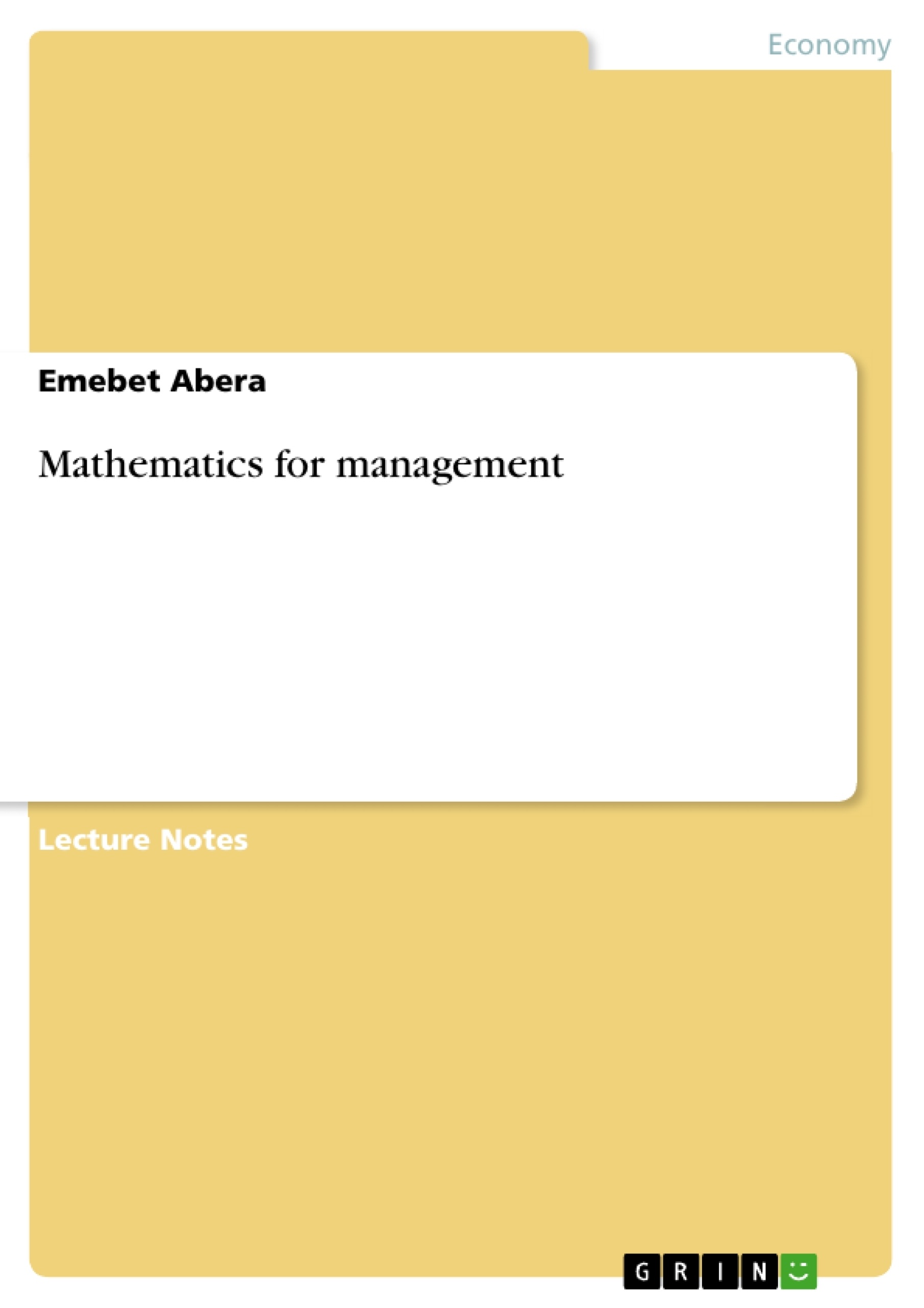Unlock the power of mathematical modeling and its real-world applications with this comprehensive guide, designed to build a solid foundation in essential quantitative techniques. Delve into the core principles of linear equations, understanding their properties, characteristics, and how they differ from their non-linear counterparts. Explore linear functions through the lens of dependent and independent variables, mastering the concepts of slope, y-intercept, and x-intercept, all illustrated with practical examples drawn from manufacturing and other relevant industries. Discover how to determine slopes, intercepts, and solution sets, equipping yourself with the tools to solve a myriad of problems. Though focusing primarily on the fundamentals of linear equations and their applications, this text also lays the groundwork for further exploration into advanced mathematical concepts. Journey beyond the basics as the book introduces matrix algebra, linear programming models, financial mathematics, and the elements of calculus, highlighting their significance in diverse fields. Grasp the essence of mathematical modeling and gain invaluable insights into its power to describe and interpret the world around us. Whether you're a student seeking a clear and concise introduction or a professional looking to refresh your quantitative skills, this book provides the essential building blocks for success. Discover how mathematical tools can be applied to analyze intricate problems, predict future outcomes, and make informed decisions across various disciplines, from business and economics to engineering and beyond. Explore the elegance and utility of mathematics and empower yourself with the quantitative literacy needed to thrive in an increasingly data-driven world, mastering the essentials of linear relationships, equation solving, and interpretative applications.
Table of Contents
- Chapter 1: Linear Equations and Their Interpretative Applications
- Chapter 2: Matrix Algebra and Its Applications
- Chapter 3: Linear Programming Models
- Chapter 4: Mathematics for Finance
- Chapter 5: Elements and Applications of Calculus
Objectives and Key Themes
This text aims to provide a foundational understanding of several key mathematical concepts and their applications. The work explores the principles and practical uses of linear equations, matrix algebra, linear programming, financial mathematics, and calculus.
- Linear Equations and their Properties
- Applications of Matrix Algebra
- Modeling with Linear Programming
- Mathematical Tools for Finance
- Fundamentals and Applications of Calculus
Chapter Summaries
Chapter 1: Linear Equations and Their Interpretative Applications: This chapter introduces linear equations, defining them, explaining their characteristics, and differentiating them from non-linear equations. It covers the standard form of linear equations with two or more variables, detailing the properties of these equations, such as the single degree of variables and the absence of variable products. The chapter also delves into linear functions, explaining the concepts of dependent and independent variables, slope, y-intercept, and x-intercept, illustrating these concepts with examples from manufacturing contexts (e.g., XYZ manufacturing company's production costs). The determination of slopes, intercepts, and solution sets for linear equations is thoroughly explained and exemplified. The significance lies in establishing a solid foundation for understanding linear relationships and their representation, crucial for various applications in other chapters.
Chapter 2: Matrix Algebra and Its Applications: (Summary not provided as the text does not contain Chapter 2's content)
Chapter 3: Linear Programming Models: (Summary not provided as the text does not contain Chapter 3's content)
Chapter 4: Mathematics for Finance: (Summary not provided as the text does not contain Chapter 4's content)
Chapter 5: Elements and Applications of Calculus: (Summary not provided as the text does not contain Chapter 5's content)
Keywords
Linear equations, matrix algebra, linear programming, financial mathematics, calculus, dependent variables, independent variables, slope, y-intercept, x-intercept, solution sets, mathematical modeling, applications.
Häufig gestellte Fragen
What topics are covered in the text?
The text provides an overview of several key mathematical concepts, including linear equations, matrix algebra, linear programming, financial mathematics, and calculus.
What are the main objectives of the text?
The text aims to provide a foundational understanding of the principles and practical applications of the mathematical concepts listed above.
What is the focus of Chapter 1?
Chapter 1 introduces linear equations, defining their characteristics, and differentiating them from non-linear equations. It also covers linear functions, including dependent and independent variables, slope, y-intercept, and x-intercept, with examples from manufacturing.
What key concepts are explained in Chapter 1?
The chapter details the properties of linear equations, focusing on the single degree of variables and the absence of variable products. It thoroughly explains the determination of slopes, intercepts, and solution sets for linear equations.
What applications are used as examples in Chapter 1?
The chapter uses examples from manufacturing contexts, such as XYZ manufacturing company's production costs, to illustrate linear equations and their applications.
What topics are covered in the other chapters?
The other chapters cover matrix algebra, linear programming models, mathematics for finance, and elements and applications of calculus. However, detailed summaries of these chapters are not provided in the given text.
What are some of the keywords associated with the text?
The keywords include: Linear equations, matrix algebra, linear programming, financial mathematics, calculus, dependent variables, independent variables, slope, y-intercept, x-intercept, solution sets, mathematical modeling, and applications.
What information does the table of contents provide?
The table of contents outlines the structure of the text by listing the titles of each chapter: Linear Equations and Their Interpretative Applications; Matrix Algebra and Its Applications; Linear Programming Models; Mathematics for Finance; Elements and Applications of Calculus.
- Arbeit zitieren
- Emebet Abera (Autor:in), 2022, Mathematics for management, München, GRIN Verlag, https://www.grin.com/document/1181120




